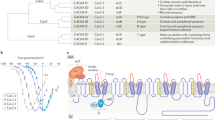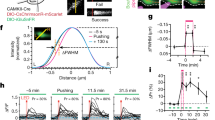Abstract
It is well established that hormone release from neurosecretory nerve terminals is triggered by an increase of the cytoplasmic ionized calcium concentration which occurs after the arrival of action potentials1. For the neurosecretory nerve terminals to recover their basal Ca2+ concentration, the calcium which has entered during depolarization must be extruded and/or accumulated in subcellular organelles or bound to some cytoplasmic proteins. Neurosecretory nerve endings are characterized by the presence of hormone-containing granules and microvesicles (earlier referred to as ‘synaptoid’ vesicles). The role of these microvesicles has been the subject of debate and has recently been reviewed2. One of the most attractive hypotheses has been that these organelles represent the retrieved membrane of the granule after exocytosis. However, on stimulation of hormone release, the number of microvesicles does not increase, suggesting that they do not participate in the endocytotic process3. Using stereology as a quantifying method, we recently demonstrated a redistribution of microvesicles towards the release site during potassium-stimulated hormone release3. It is thus possible that microvesicles in neurosecretory nerve terminals might function as calcium accumulating organelles as suggested for the coated vesicles isolated from the cerebral cortex4,5. We report here that a microvesicle-containing microsomal fraction isolated from neurosecretosomes (isolated neurosecretory nerve terminals) possesses an ATP-dependent calcium transporting system. This system enables the fraction to accumulate calcium ions when the external ionized calcium concentration is <1 µM, which is in the physiological range.
This is a preview of subscription content, access via your institution
Access options
Subscribe to this journal
Receive 51 print issues and online access
$199.00 per year
only $3.90 per issue
Buy this article
- Purchase on Springer Link
- Instant access to full article PDF
Prices may be subject to local taxes which are calculated during checkout
Similar content being viewed by others
References
Douglas, W. W. in Handbook of Physiology Sect. IV, 191–224 (Am. Physiol. Soc., Washington, DC, 1974).
Morris, J. F., Nordmann, J. J. & Dyball, R. E. J. Int. Rev. exp. Path. 18, 1–95 (1977).
Morris, J. F. & Nordmann, J. J. Neuroscience 5, 639–649 (1980).
Blitz, A. L., Fine, R. E. & Toselli, P. A. J. Cell Biol. 75, 135–145 (1977).
Rahamimoff, H. & Spanier, R. FEES Lett. 104, 111–114 (1979).
Gratzl, M. et al. Biochim. biophys. Acta 470, 45–57 (1977).
Lowry, O. H. et al. J. biol. Chem. 193, 265–275 (1951).
Shaw, F. D. & Morris, J. F. Nature 287, 56–58 (1980).
Blaustein, M. P. et al. J. gen. Physiol. 72, 15–41 (1978).
Chevallier, J. et al. Biol. Cell. 30, 103–110 (1977).
Hasselbach, W. Prog. Biophys. molec. Biol. 14, 167–222 (1964).
Stoeckel, M. E. et al. Cell. Tissue Res. 157, 307–315 (1975).
Russell, J. T. & Thorn, N. A. Acta physiol. scand. 93, 364–377 (1975).
Blaustein, M. P. et al. Ann. N.Y. Acad. Sci. 307, 195–212 (1978).
Martonosi, A. & Feretos, R. J. biol. Chem. 239, 648–658 (1964).
Author information
Authors and Affiliations
Rights and permissions
About this article
Cite this article
Nordmann, J., Chevallier, J. The role of microvesicles in buffering [Ca2+]i in the neurohypophysis. Nature 287, 54–56 (1980). https://doi.org/10.1038/287054a0
Received:
Accepted:
Issue Date:
DOI: https://doi.org/10.1038/287054a0
This article is cited by
-
Membrane routing during exocytosis and endocytosis in neuroendocrine neurones and endocrine cells: use of colloidal gold particles and immunocytochemical discrimination of membrane compartments
Cell and Tissue Research (1991)
-
Calcium and neuronal function
Neurosurgical Review (1988)
-
Release of neuropeptides does not only occur at nerve terminals
Bioscience Reports (1988)
-
Effect of stimulation of calcium metabolism on morphology and function of the mammalian brain
Bulletin of Experimental Biology and Medicine (1987)
-
Ultrastructural changes in adrenaline- and SGC-cells after morphine coincide with alterations of adrenaline and dopamine levels
Cell and Tissue Research (1984)
Comments
By submitting a comment you agree to abide by our Terms and Community Guidelines. If you find something abusive or that does not comply with our terms or guidelines please flag it as inappropriate.



